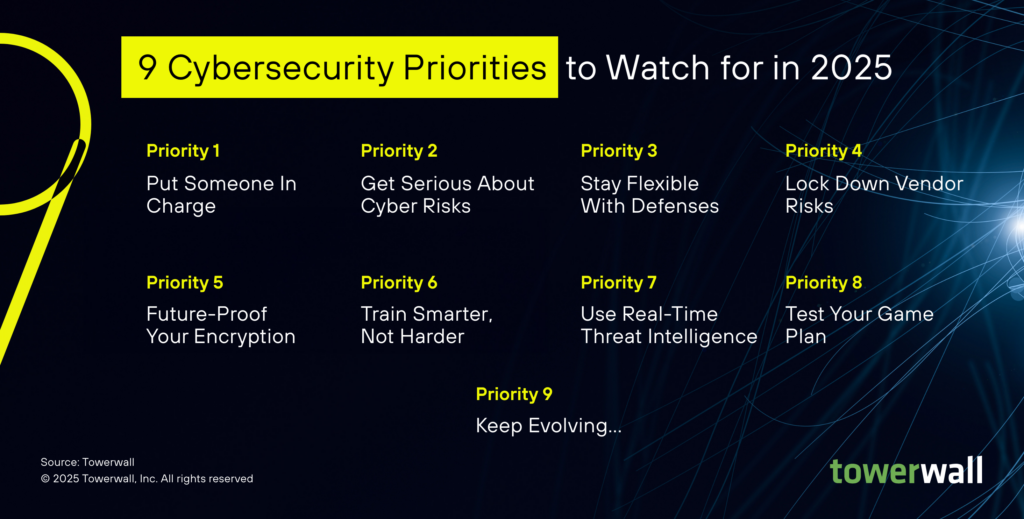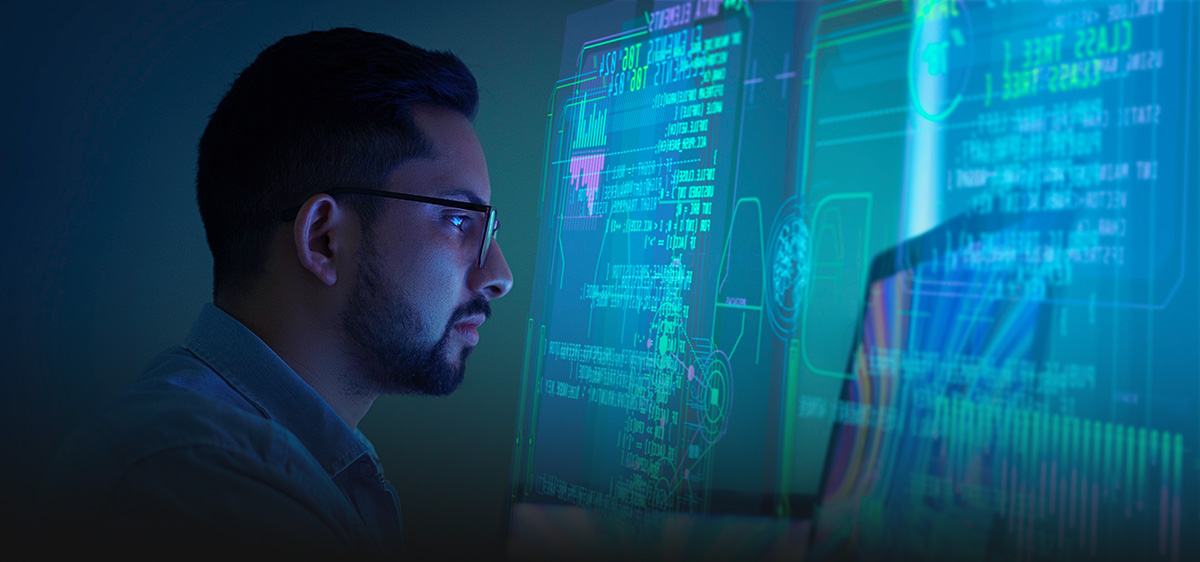Nine Priorities For Your 2025 Cybersecurity Plan And Strategy
Approximately 1 in 3 SMBs were hit by a cyberattack last year—some costing upward of $7 million. The need to prioritize cybersecurity has never been greater. Let’s explore nine cybersecurity elements that organizations must prioritize for 2025.

1. Put Someone In Charge
Just like you have an expert in charge of looking after your company’s finances, it’s essential that you have an expert leading your organization’s cybersecurity initiatives. Both the threat and business landscape are fast-evolving, making it imperative to recruit a dedicated resource to maintain oversight, stay apprised of the latest trends, identify areas for security investment, report to senior management and adapt security initiatives where necessary.
2. Get Serious About Cyber Risks
In 2025, cybercrime is expected to cost global businesses a whopping $12 trillion in damages. Damages inflicted by threat actors will extend far beyond just financial losses. Cyberattacks can lead to massive disruptions in critical infrastructure and business operations, theft of proprietary data, loss of customer trust and business reputation, compliance failures and legal ramifications. The stakes could not be higher for leaders to perceive cyber threats as a dimension of enterprise risk.
3. Stay Flexible With Defenses
Legacy security systems rely solely on signature-based detection, unable to detect threats they haven’t encountered before. Businesses need more intelligent and adaptive security systems that leverage things like AI and machine learning to analyze network traffic and context (identity, location, device, unusual behaviors, etc.), detect anomalies, update their security controls automatically and respond to threats in real time. Security approaches like zero trust can also be beneficial in continuously authenticating, verifying and monitoring users.
4. Lock Down Vendor Risks
Since 2018, supply chain attacks have grown by 2,600%. Threat actors know it’s much easier to target smaller suppliers with weaker security controls rather than attack large organizations with mature defenses. Infiltrating a well-established supply chain partner can open Pandora’s Box to thousands of companies that do business with them. As an example, the 2020 breach involving SolarWinds led to 18,000 customers receiving a compromised software update. Organizations must conduct rigorous supply chain assessments, identify high-risk suppliers, ensure that they improve their security standards and build a mechanism to monitor supply chain risks.
5. Future-Proof Your Encryption
Quantum computing is expected to arrive on the scene over the next decade, and it’s possible that threat actors and rogue nations will harness it to crack traditional encryption methods like RSA. Bad actors have already begun adopting a “harvest now, decrypt later” strategy in the hopes of exploiting quantum for malicious gains. Organizations should plan on integrating quantum-resistant encryption algorithms to prepare for the quantum age.
6. Train Smarter, Not Harder
Nearly two-thirds of breaches begin with a simple human error—employees clicking a link, downloading a file or responding to malicious queries. Awareness training has become a non-negotiable component in the overall cybersecurity toolbox. Annual check-box training exercises will not suffice. Organizations must step up their employee training with engaging and realistic phishing simulation exercises that cover AI-driven frauds, deepfakes and other sophisticated attack scenarios.
7. Use Real-Time Threat Intelligence
Most cybersecurity tools can block known threats, but this approach is reactive, not predictive. Alternatively, threat intelligence offers a more forward-looking approach where organizations can anticipate and defend against emerging threats before they can inflict severe damage. This involves gathering and analyzing attacker TTPs (tactics, techniques, procedures), real-time data feeds from internal security systems and other indicators of compromise (IoC) supplied by third-party threat intelligence sources. This proactive approach helps organizations stay one step ahead of threat actors, enhancing the overall effectiveness of defense measures.
8. Test Your Game Plan
Despite best practices, cyberattacks can happen anytime. Therefore, it’s advisable to focus not just on prevention but also on resilience. This means having well-defined incident response plans (IRPs) that outline steps for mitigation, individual responsibilities, key contacts, backup and restoration processes and other advanced scenarios such as AI-enabled attacks and supply chain breaches. Ensuring attack preparedness will significantly boost the ability to detect, respond, and recover from cyber threats quickly, minimize downtime, reduce reputational damage and maintain business continuity.
9. Keep Evolving
Cybersecurity defenses and strategies must never remain stagnant. Organizations must maintain constant oversight over things like the threat landscape (changing threats, vulnerabilities and attacker tactics), technological landscape (AI, cloud, IoT, quantum computing), geo-political risks (likelihood of threats from hostile nations), the business environment (mergers, acquisitions, new product launches), the regulatory landscape (new industry or data security and privacy mandates), and adapt their defenses, protocols and response mechanisms.
By adopting these recommended security priorities, organizations can strengthen their cybersecurity posture and establish a more resilient framework that can help detect, respond and rebound from potential threats.
This article was originally posted on Forbes Technology Council >


